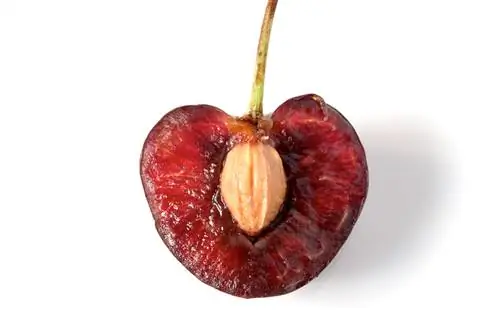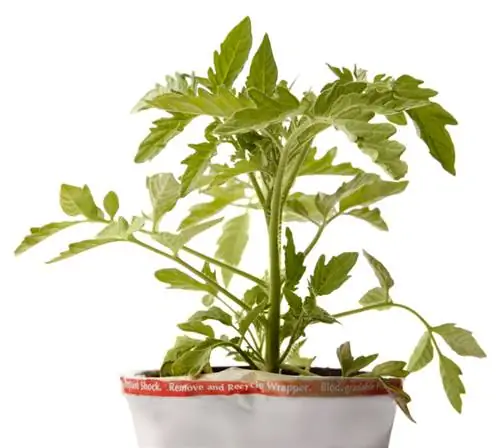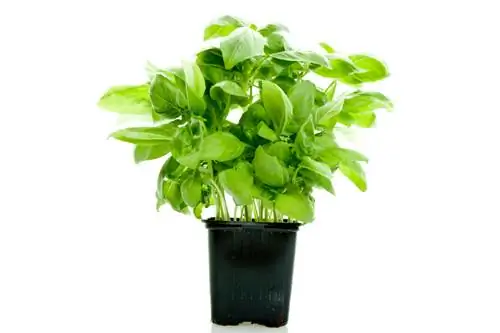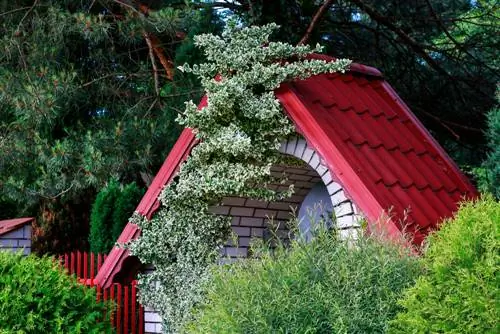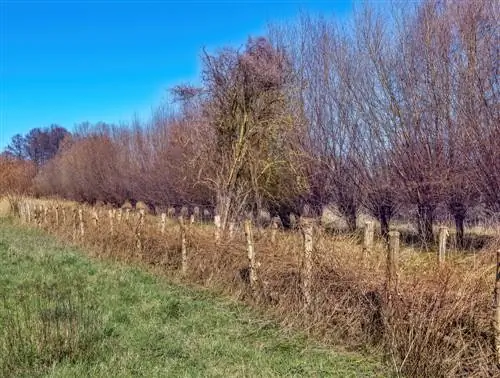- Author admin [email protected].
- Public 2023-12-16 16:46.
- Last modified 2025-01-23 11:21.
The creeping spindle is extremely popular as a ground cover, and the climbing varieties are also a striking alternative to wall greening. However, the perennial's range of uses is not yet exhausted: it can also be cultivated as a small hedge.

Is the creeping spindle suitable for a hedge?
The creeping spindle is suitable as a hedge for low borders such as grave borders, flower beds or front garden borders. It grows slowly and densely, requires little care and pruning, tolerates shady locations and is lime-tolerant.
The growth diversity of the creeping spindle
The creeping spindle's crawling properties are embedded in its name. In fact, their slow but dense growth behavior can be accurately described with this attribute. Depending on the species, the versatile plant has the peculiarity of crawling along the ground as well as vertically using adhesive roots. It is therefore most often used as a weed-inhibiting ground cover or as an ornamental, easy-care wall planting.
Your hedge potential
For certain creeping spindle varieties, a third type of cultivation is also possible: the hedge. Some varieties reach a height of around 40 to 100 cm when they are allowed to grow into a bush. That's not much and makes it impossible to use it as a hedge to protect the property from view. However, where low hedges are desired as accurate borders, creeping spindles are ideal. Because they bring with them some advantages:
- slow, dense growth
- ideal for low borders due to limited growth height
- relatively undemanding in terms of location
- decorative leaf variegation, pretty fruit decoration
All creeping spindle species have the dense growth in common. This is an enormous advantage for creating hedges, especially in low bed or grave borders. This means that a very neat contour can be achieved with regular cutting. In addition, cutting is rarely necessary, even if the hedge needs to be very clearly shaped. Ideal conditions for everyone who can or only wants to spend a little time on care.
Exclusively for low hedge design
The limited growth height makes the creeping spindle ideal for all hedge borders that should not obstruct the view. Ideal uses include:
- Grave borders
- clearly structured beds
- Front yard border
For graves, a hedge border can play an enclosing role - the low height prevents the gravestone and the inscription from being obscured at some point. The rarely necessary pruning is also very pleasant given the occasional grave visit.
Even when bordering the bed or front garden, the low creeping spindle hedge leaves a clear view of the essentials, in this case the indoor plants. The often beautifully variegated leaves, which show up in different colors depending on the season, and the whitish to reddish fruits also offer an attractive yet reserved visual appeal.
Undemanding location
The creeping spindle's location requirements are also low: most varieties thrive well in shady places, are lime-tolerant and only require moderately nutrient-rich soil.


